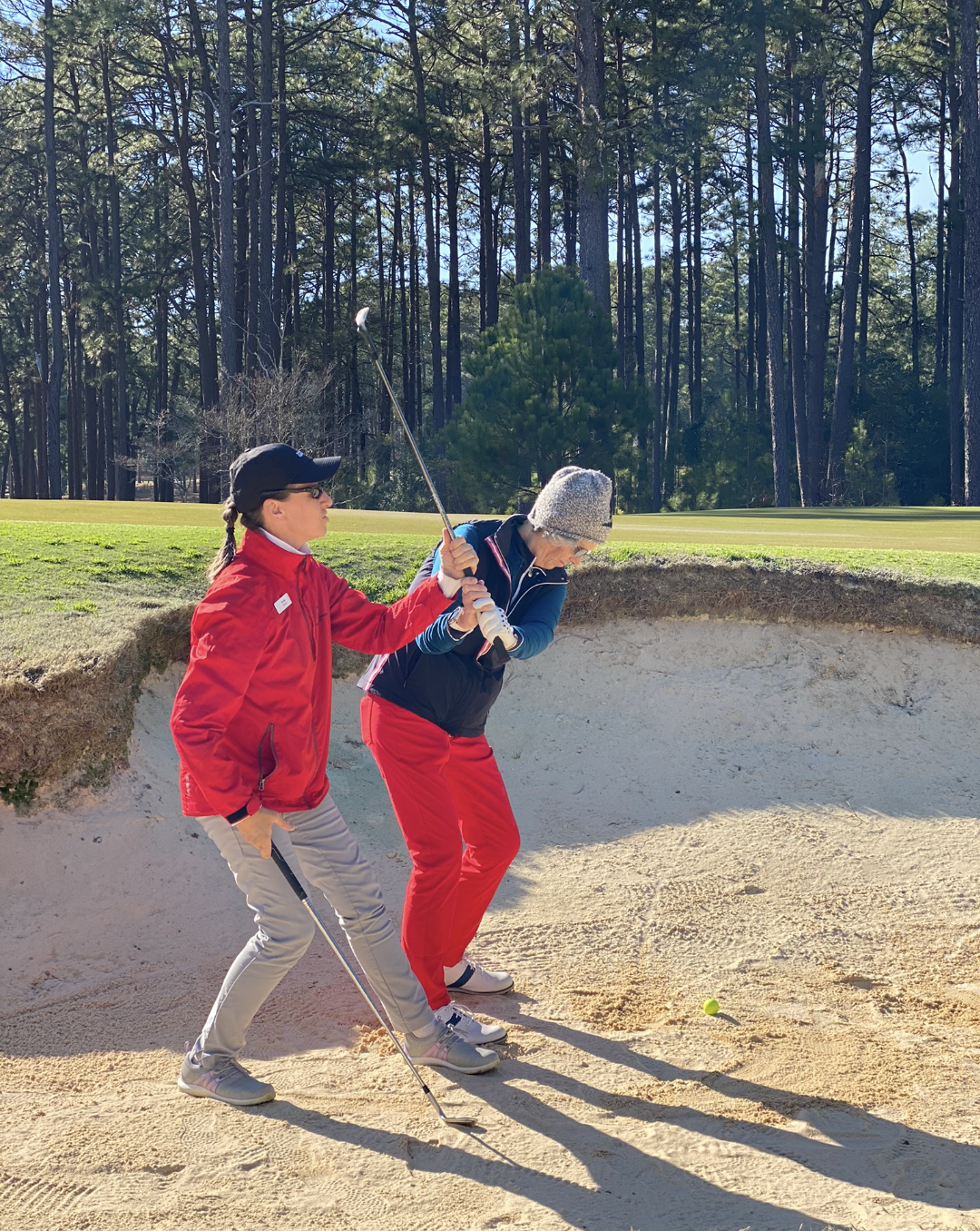Nicole’s Notes: Golf’s Consistency Challenge

Nicole Weller, LPGA/PGA Golf Teaching Professional
Whenever I inquire about a student’s goals, the top response is the desire for more consistency. It’s a super popular quest by all golfers. Who wouldn’t want to find the perfect way to move the ball the same way each time — it’s so much more fun, rewarding and easy!
The interesting thing, though, is that consistency is a myth. As human beings who function a little differently every day, a more realistic goal might be to have a smaller window of variability. Instead of the big misses, can the shots have a lot closer pattern, wavering maybe a little this way or that way but not as wide a dispersion?
Pia Nilsson and Lynn Marriott are world-renown owner coaches of VISION54 (Pia coached Annika Sorenstam and they both coach many great current Tour players, amateur competitors and recreational golfers). They say be a “Master of Variability – Be adaptable! Every day on the golf course will be variable. Consistency is a myth. You want to learn your own common tendencies what you do when playing great and how you get in your own way. Those tendencies can be consistent! By recognizing these tendencies you can start to manage yourself on the course, no matter what happens each day – and you will be a master of your own variability.”
While playing at Wake Forest University on scholarship for the women’s golf team, I had shot my lowest round of golf during a qualifier for a travel event at one point. What a fluid, easy round – I couldn’t do anything wrong! I expected that the next day and tried to find what I had instead of being who I was that day and hitting the shots I had that day and scored a lot higher than expected.
Having great routines and a perfect swing doesn’t mean it’ll come through as planned. It just increases our odds. Golf is a difficult game for a round, let alone four rounds in a row to win an event at a professional touring level or amateur Club Championship.
Dr. Robert Bjork, distinguished cognitive psychology research professor at UCLA, has done a great amount research on learning and forgetting. Just because one can perform something doesn’t mean it’s been learned and conversely just because something’s been learned doesn’t mean that it can always be performed exactly the same. Two top players at The Masters recently both hit their second shot way right of the 15th green on the final day, very off-line for players of their caliber. How could that happen after all the millions of golf balls they’ve hit with a coach right there? It’s the human factor and just because they’ve learned it doesn’t mean it can always be performed the way we intend, so we need to give ourselves some slack, acknowledge and honor the human factor, and move forward to do it again.
So how can one create a tighter result pattern?
- Be aware of both your technical skill and your human skills you bring to the table each day, they’ll vary and that’s OK. Just check in with what you have that day. A former colleague of mine who coached at a large SEC university men’s golf team and had played in two U.S. Opens said if his ball curved a little right that day, he played it. If it curved a little left another day, he played it. He didn’t try to fix it. He learned how to make his shots that day get to the hole. Patterns are a gift, so learn to recognize them and capitalize on them.
- Spend energy on what you can control and not what you can’t. Golfers spend too much time on trying to micromanage things that are out of one’s control (other people, weather, results, fairness, one’s swing mechanics). Do your best to plan and then not worry, play. Rehearse a swing feel or image away from the ball and then once you address the ball, it’s time to play, not think and micromanage. In The Master’s recently, Ludvig Aberg from Sweden did all his planning (95 percent of his shot) and then spent very little time over the ball and executed his shot (5 percent of his shot). Let go of things you can’t control and focus on your planning, intent, attitude, how you power yourself during a round with food and hydration, how you warm-up effectively… remember it takes only 15 minutes to actually play the game of golf. All the time between those swings are how you can be successful or not, based on what you tend to be attentive to and how you react.
- Learn to practice better with blocked (repetitive) and random (scrimmaging) type practice so that what’s learned can then also be performed with variables. I love taking students out on the course or range for Transfer Play Practice. Hitting 10 7-irons on the range is one thing. Super and congratulations! But can you do it after having had five minutes since your last swing on a totally different terrain with the perceived pressure of the match or your friends’ comments? It’s one thing to learn how to shoot a basketball over and over again. It’s another to shoot a basketball with someone charging at you with arms flailing and a crowd cheering for you to miss while you have to pivot, re-set and shoot…did you practice shooting that way? Train better! Check out a brilliant book a colleague of mine, Trent Wearner called “Golf Scrimmages: Realistic Practice Games under Pressure” to help learn how to hit shots.
- Be okay knowing you can’t be consistent but striving towards a tighter window of variance. A golfer might only hit one shot straight on the range but the other nine were only five-ten yards off in each direction. That’s better than three very straight shots and the other seven shot being 20 yards or more off and ‘out of bounds’…it’s a more playable tendency.
Above all, stay the course, enjoy exploring your game and either being successful on some days and rounds and learning about what could be better on the other days.
Nicole Weller instructs local area golfers at Compass Pointe Golf Club in Leland. Feel free to submit your question or topic for the Nicole’s Notes column via her website ‘Contact Nicole’ page. For more information on Nicole and her tips / videos, visit www.nicoleweller.com.











Leave a Reply